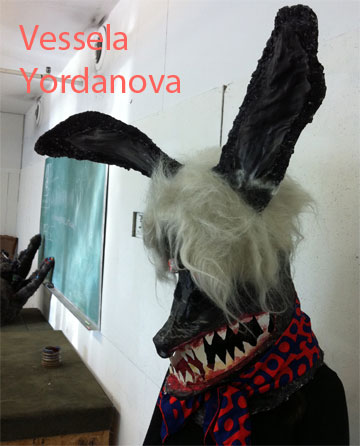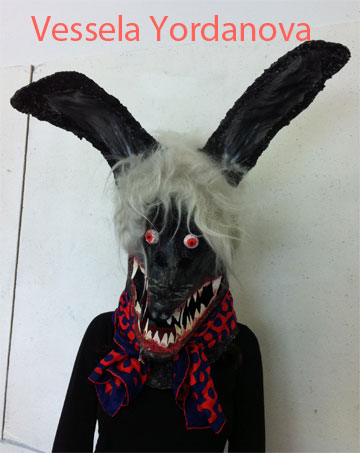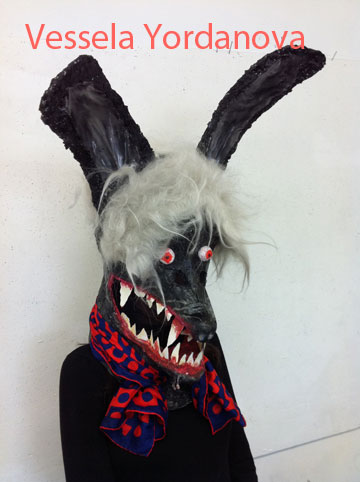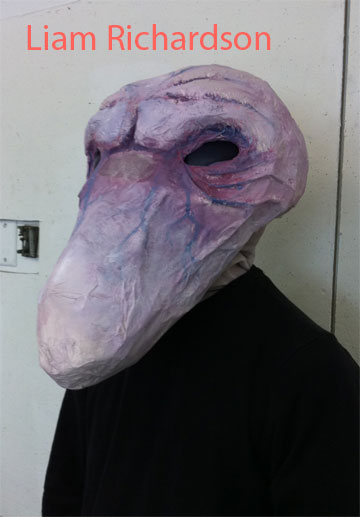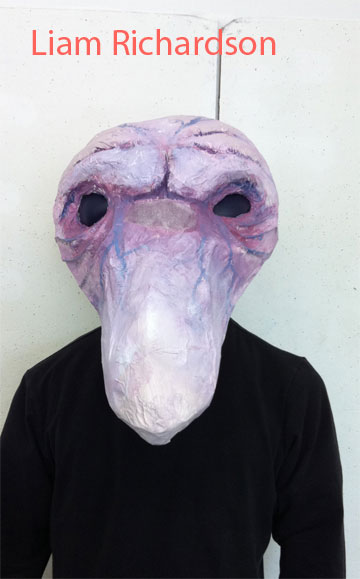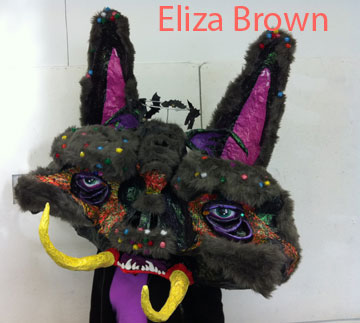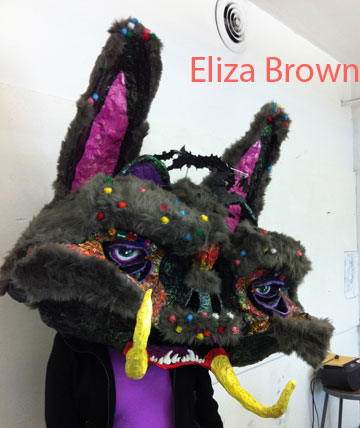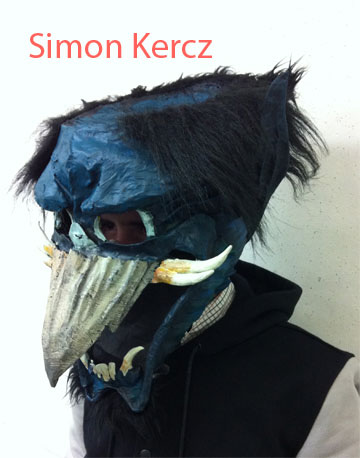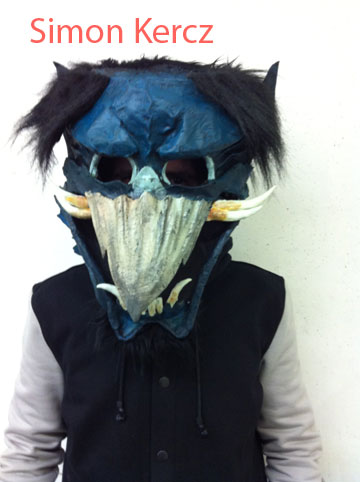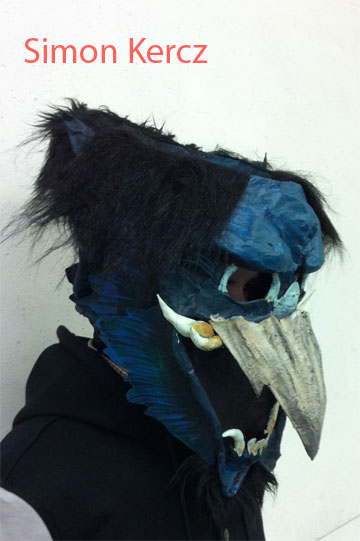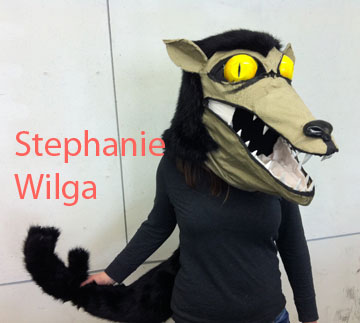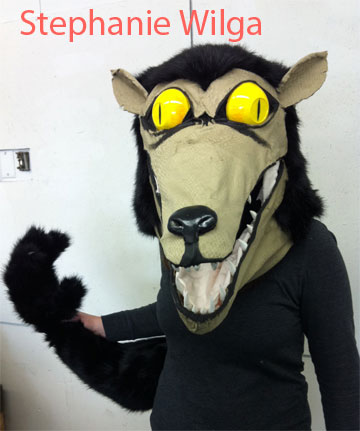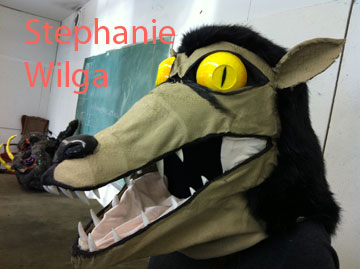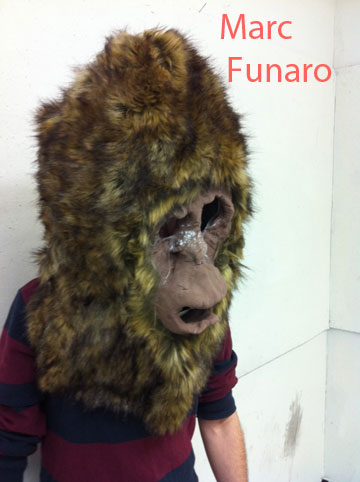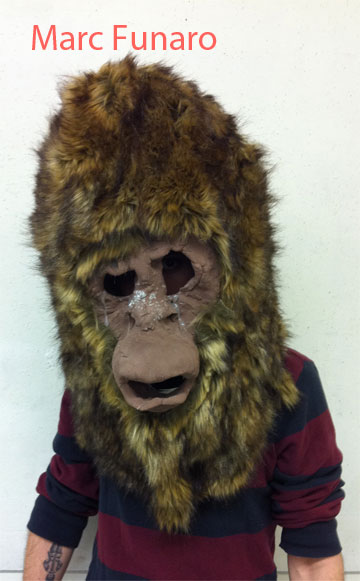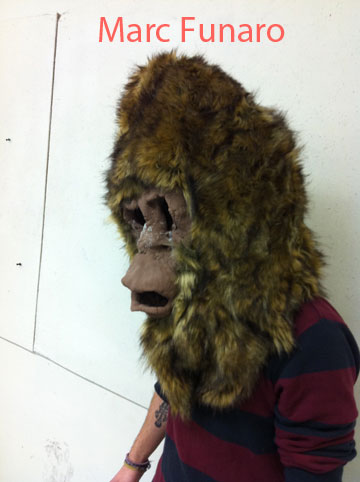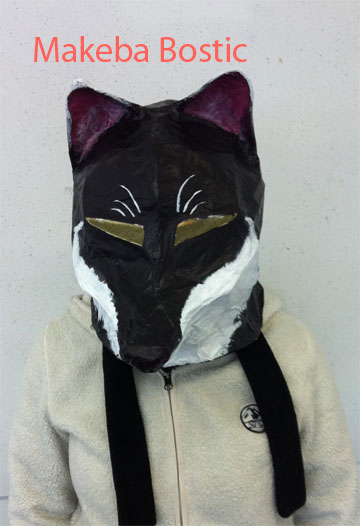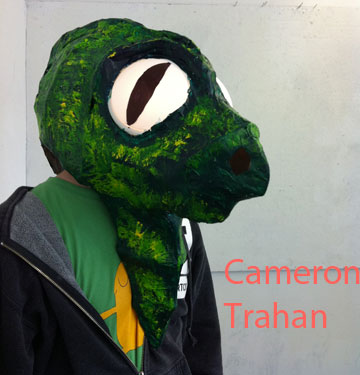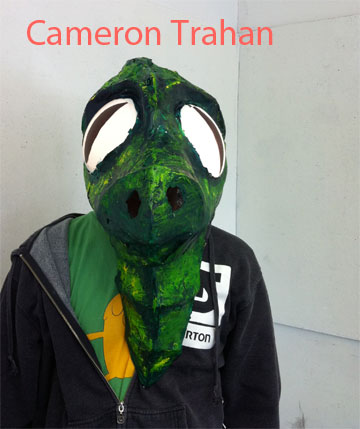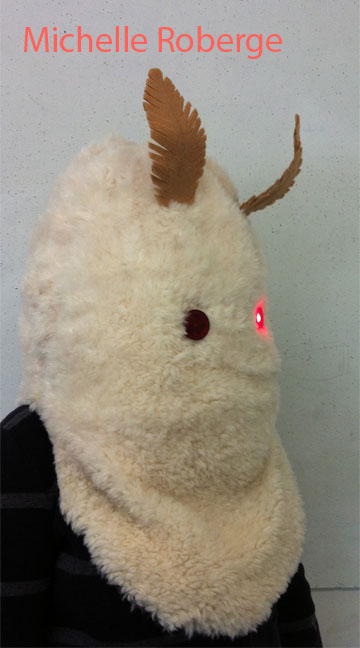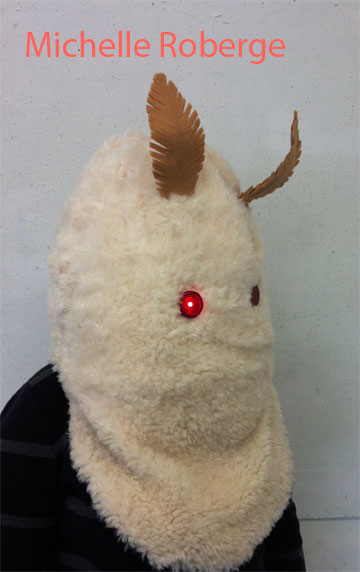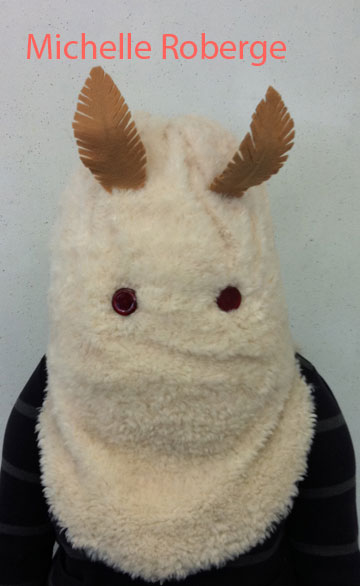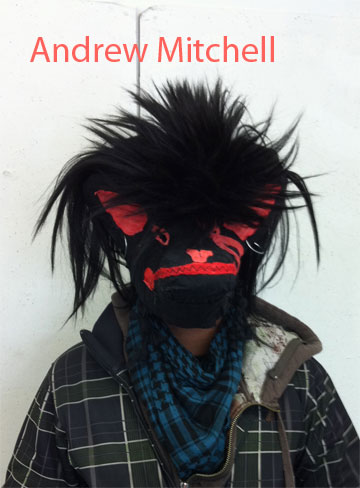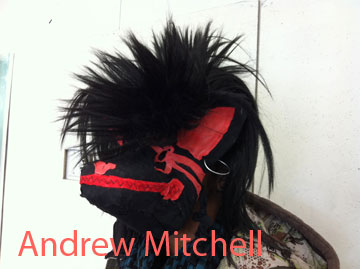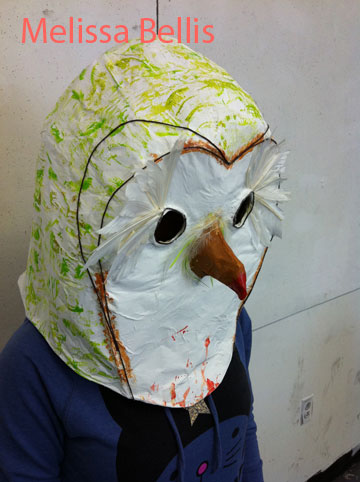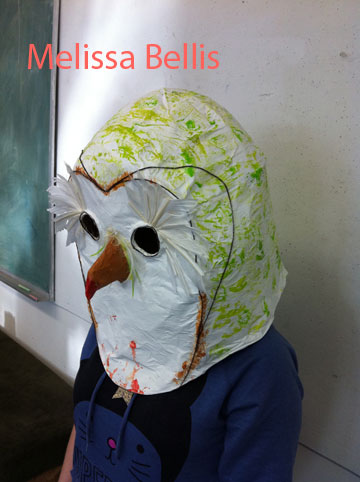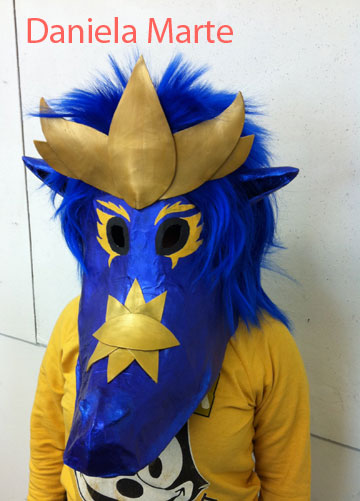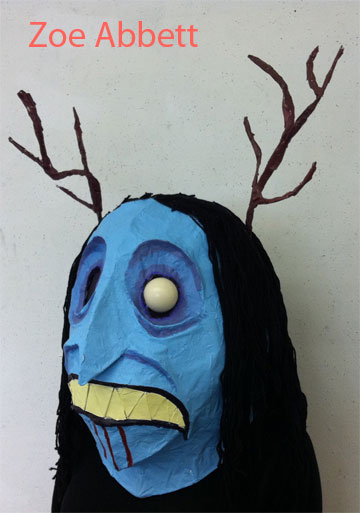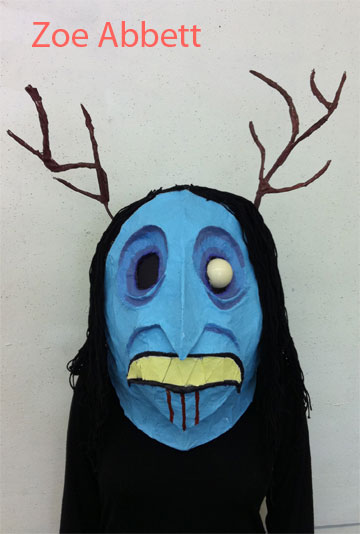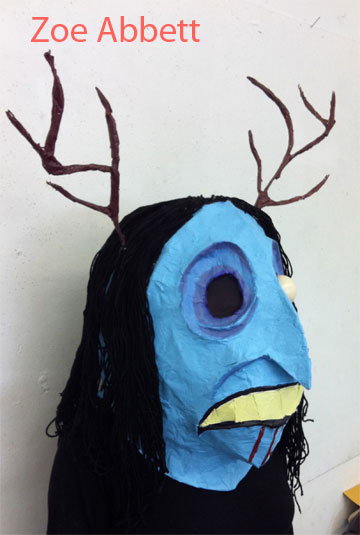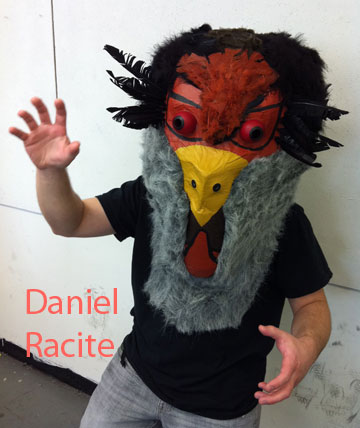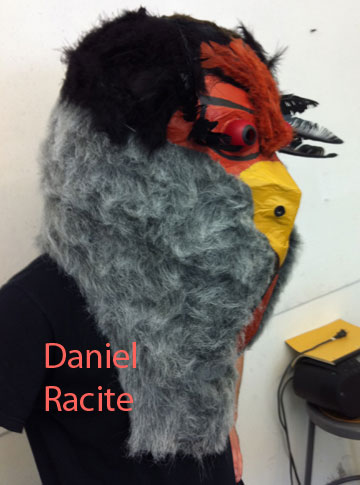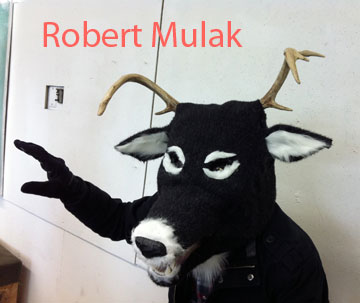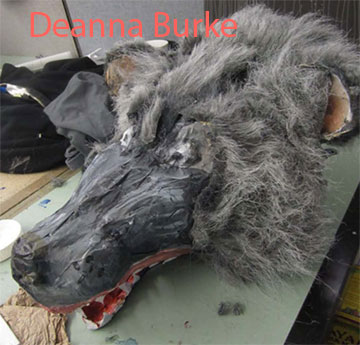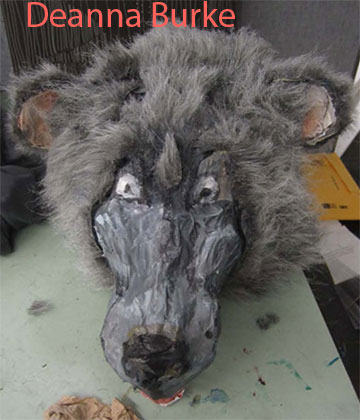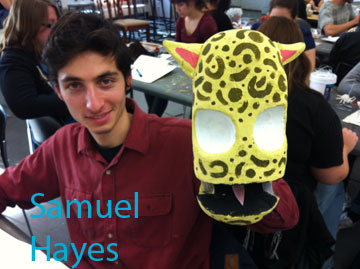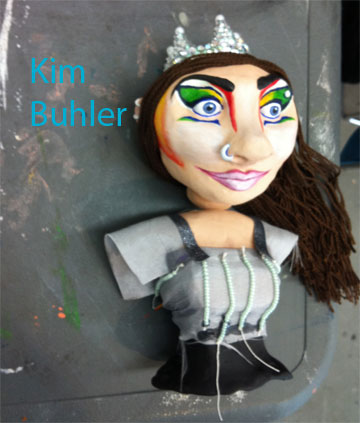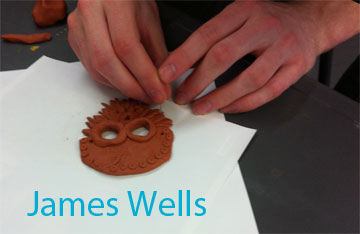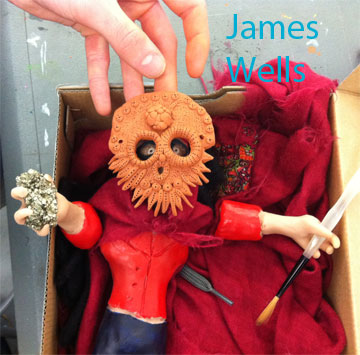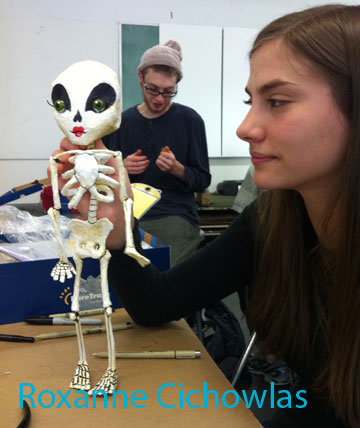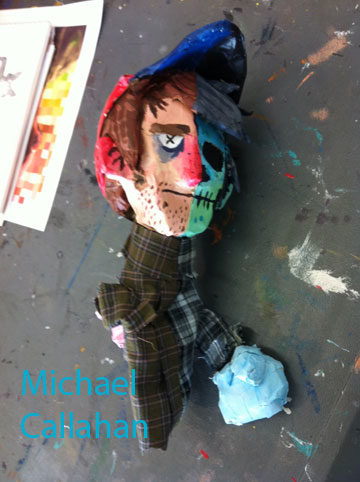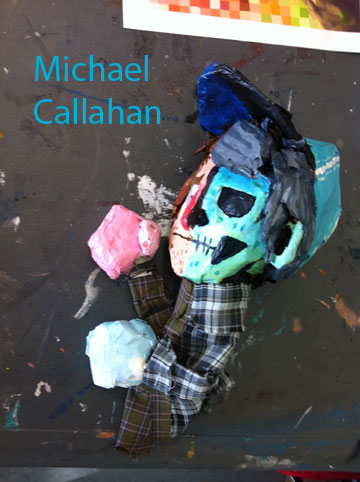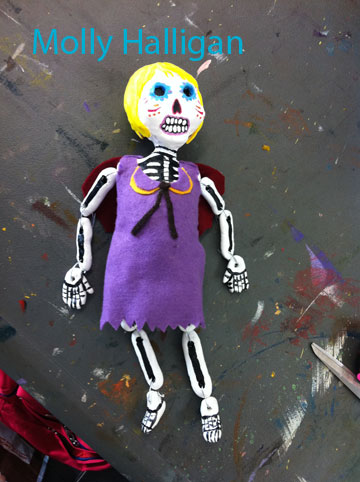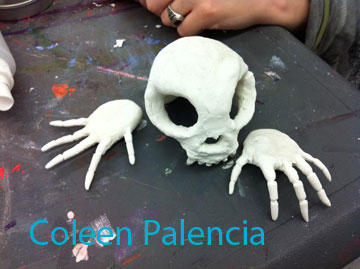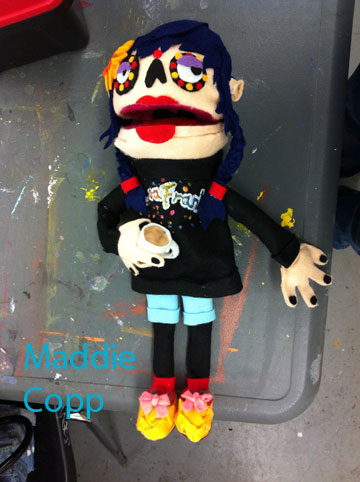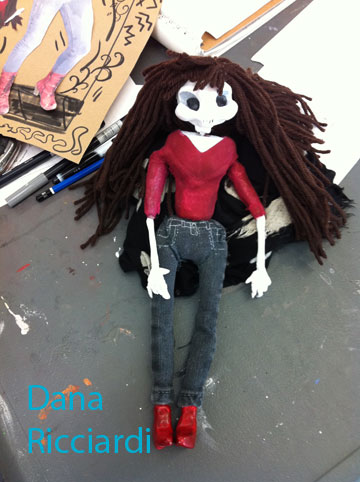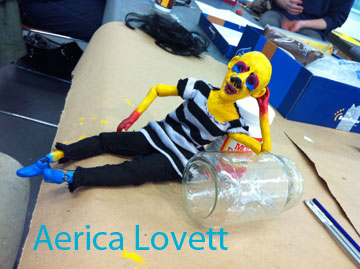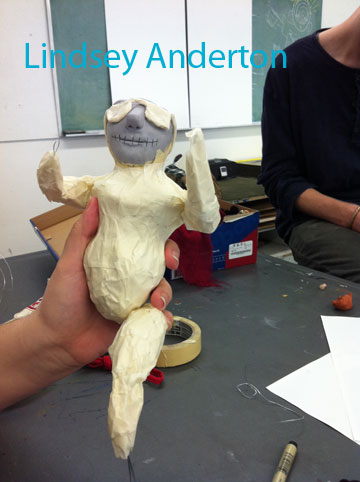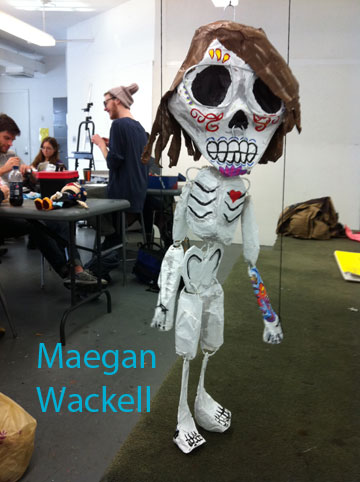Illustrative
Mask-Making, CDIL319-01 , 3 Credits
Fridays 9am-1pm in Room 914, Tower
Mark Reusch, instructor, office T625 . Office Hours:
Fridays, 8:30am-9am, 1-1:30pm
Design office phone: 617-879-7650.
COURSE DESCRIPTION:
In this course students are challenged
to create 3-dimensional painted masks as mixed-media solutions to illustration assignments.
Projects will focus on 2D and 3D character design, the history of masks in
various world cultures, and puppets. Students will experiment with various
traditional and non-traditional materials in making a series of masks, simple
costuming and puppets, with a strong focus on research, sketching, painting and
personal voice. All students will wear
their masks as models for at least one special session of Open Drawing Spring
2014, in solo or group poses.
DEPARTMENTAL GOALS for
Juniors & Seniors: Understanding a
range of drawing/ painting materials & methods ; Expertise in using tools to advance craft;
Understanding use of image making technology ; Understanding implied &
sequential narrative ; Acquiring conceptual thinking skills; Valuing experimentation,
investigation & risk taking; Developing strong personal voice; Embracing
cross cultural awareness; Importance of effective creative collaboration;
Understanding professional ethics and practices ; Understanding the role of
artist/ illustrators (historic & contemporary); students are expected to
develop their abilities to engage in critical, reflective discourse about their
work and the work of others
COURSE OBJECTIVES: Students study the creation and use of
3-dimensional masks and puppets as solutions to traditional illustration
assignments, through experimentation with conventional and unconventional
materials. Students are expected to
learn to combine drawing, painting, digital art, and photography with mask
making to create unique illustrations ready for print.
COURSE CONTENT: Four
illustration assignments that require research, and conceptual thinking; creating thumbnail sketches and 2 strong
final sketches for 2-d illustrations that will include collage of 3-dimensional
elements, and color studies of approved sketches; traditional and/or digital
drawing and painting; building 3-d masks
and puppets; photography of your 3-d projects; and collage. Process work must
be completed before moving onto completion of both the 2-d illustrations and
3-d masks, and will count towards your grade for each assignment. Process work, 3-d projects, and 2-d final
illustrations must all be completed by the specified deadlines. Each class meeting begins with a critique of
homework assignments before switching to studio work; there will be 2-d and 3-d
demonstrations by the instructor, as well as a presentation by a visiting
artist.
COURSE CALENDAR:
Friday January 24: Syllabus reviewed. Galvanized wire and tape mask structure
building technique demonstration.
Project one assigned: CRYPTID
mask illustration!!!! Research Cryptids from
around the world and choose one that you will build a mask/ illustration
of. The illustration will show your
Cryptid interacting with at least one person in a specific environment related
to the Cryptid. You will build the mask,
photograph it, and collage the photo into your finished illustration. Minimum size for finished illustration is
11" x 14". Students will
examine the work of Dave McKean for inspiration of 2-d/ 3-2 photo collage. Homework:
buy mask-making materials, do at least 10 thumbnails and 2 finished
sketches for your Cryptid illustrations, and do 360-degree view sketches for
the Cryptid mask.
Friday February 7: Critique of Cryptid illustration sketches and
mask sketches. In-class work &
homework: begin construction of wire
framework and layers of tape. Homework:
continue working on mask and illustrations.
Friday February 14: Critique of mask frameworks-in-progress and
Cryptid illustrations in progress. Classwork
& homework: Finish Cryptid mask, and
continue working on the full-color illustration of your Cryptid, minimum size
11" x 14".
Friday February 21:
Critique of finished Cryptid masks.
Classwork: Project 2 assigned: The chapter, "What You Did Not Know
About Hoboes", from John Hodgman's
book, THE AREAS OF MY EXPERTISE, featuring “700 Hobo Names”. Instead of
illustrating the chapter with a 2-d drawing or painting, you'll be creating a
3-d, wearable, mixed media illustrated mask with the human face as the basis,
building off it with a variety of materials to convey Hodgman's narrative. These finished masks will be photographed and
submitted with your names and websites to an online gallery featuring
illustrations of the “700 Hoboes”. Class will examine the work of Stasys
Eidrigevicius for inspiration. Homework: 1. finish up the Cryptid
illustrations; 2. Pick 3 Different Hobo names from Hodgman's list, and do
thumbnail sketches and 360-degree view, full-color concept sketches for 3
DIFFERENT illustrated masks.
Friday February 28:
Critique of Critique of Project 2 Cryptid illustration, & Critique of Hobo
mask sketches. In-class work &
homework: begin working on mask and
illustrations that will go on it.
Friday March 7: Critique of masks-in-progress. Project 3 assigned: research folktales/
myths/ legends/ fairytales pertaining to your own individual ancestry, and
begin brainstorming concepts for a mask based on one story. Begin sketching out full-color comps for your
3-d mask. For this project you will
create illustrations that combine digital photography of you or a model wearing
your mask, with the rest of the image created by either traditional or digital
collage. Homework: Finish Hobo mask;
choose your specific myth/ legend/ folktale for a mask & illustration, and
do at least 10 thumbnails & 2 finished sketches for your mask &
illustration
Friday March 14: NO
SCHOOL, SPRING BREAK
Friday March 21: Critique of Project 2 Hobo mask, and
Project 3 thumbnails, sketches, and mask sketches. Classwork & Homework: Begin construction of your ancestry/ folktale
mask, and continue to develop the composition for the final illustration.
Friday March 28: Critique of Project 3 masks-in-progress
and comps. Classwork & homework: Complete at least 50% of project 3.
Friday April 4: Critique of Project 3 in-progress. Live presentation by visiting artist. Homework:
complete Project 3 mask.
Friday April 11: Critique of finished Project 3 masks. Mexican Day of the Dead art and masks
examined. Puppet project assigned:
create a Day of the Dead self-portrait, as a hand-puppet. Your personality, everyday habits, favorite
colors, favorite clothing should play a part in your design, not just physical
appearance. You'll photograph the puppet
interacting with you in an interesting composition for the final product. In-class work & homework: finish Project 3 final illustration, and
begin full color sketches for your puppet self-portrait, and thumbnails and
final sketches for the final composition of you and your puppet interacting.
Friday April 18: Critique of Project 3 illustrations, and
self-portrait puppet sketches. In-class
work and homework: Begin constructing your puppet.
Friday April 25:
Critique of puppets in progress. Classwork
& Homework: complete Day of the Dead self-portrait puppet.
Friday May 2: Critique of finished puppets. Classwork & Homework: photograph yourself
with your self-portrait puppet. The
photograph may be digitally altered or painted on traditionally. Email a 72dpi 8” x 10” jpeg of your completed
photo collage to Mark.Reusch@massart.edu
by 9am, Friday May 9th.
Friday May 9: :
READING DAY, NO CLASS MEETING. Good luck
at Reviews, and have a fun summer!!!
COURSE ASSESSMENT AND GRADING:
Students will receive a checklist after each project deadline, indicating a check-minus, check, or check-plus for the completion of the following categories: Thumbnails, 2 Final Sketches, Color Studies, 360-degree Mask Studies, 3-d Mask/ Puppet, Final Illustration, as well as a letter grade for the entire project, in addition to instructor’s notes and feedback. Each of the four assignments carries the same weight in determining the final grade for the semester. Student’s conceptual thinking, experimentation with materials, craft, professionalism, and class participation will be noted with a check minus, check, or check plus on project deadline forms, and are all factors in determining a final grade for each individual project, and for the final grade of the semester.
Professionalism in the Illustration business is an absolute
MUST, so make sure you are on time and ready for class every week! Homework
turned in late will be penalized one full-grade each week it is late. Students in the Illustration department must
maintain a C+ or better average for each of the department's classes, and end
of semester reviews determine whether or not students are allowed to continue
within the department.
*ALL CELL PHONES MUST
BE TURNED OFF AND PUT AWAY WHILE IN CLASS.
TEXTING IS NOT ALLOWED IN CLASS. Students who do not follow this rule are not
allowed to stay in class.
Pencils, erasers, & pens
sketchbook
acrylic paints
fluorescent paints
gesso
2" wide (or wider) masking tape
coils of 14 gauge galvanized wire, 100'
coils of 24 gauge galvanized wire, 250'
strong wirecutters
needlenose pliers
air-dry clay
sculpting tools
super-sculpey
joint compound
sandpaper
respirator mask
xeroxed images
matte medium
blending marker
fake fur
feathers
LED lights
wood
plaster
papier-mache
fabrics
found objects
GRADES ARE DEFINED AS FOLLOWS:
A Exceptional work in all respects
B Above average work, distinguished in certain but not all respects
C Adequate work
D Below average work. This is the lowest passing grade.
F Failing work. No credit is given.
INC Incomplete. A temporary designation indicating that at least 80% of the course requirements have been met and that the remaining course requirements are expected to be completed by no later than the subsequent mid-semester. Incompletes are offered at the discretion of the faculty, and only under dire circumstances. It is the student's responsibility to complete the required work by the agreed-upon deadline. If the student does not complete the course work, a non-passing grade will be issued.
COURSE
ATTENDENCE Students may miss no more
than 2 classes or they get no credit for the class. Students are required to
arrive for class no later than 9:10. 2
late arrivals equal one absence. Students must email instructor ahead of time
if they know they’ll be absent, or immediately after an absence, to go over
course material that was missed (Mark.Reusch@massart.edu
). Students are also encouraged to meet
with instructor during office hours regarding questions or concerns.
STUDENTS WITH
DISABILITIES STATEMENT: "Massachusetts
College of Art and Design is committed to fostering the academic, personal, and
professional growth of our students. We are especially committed to ensuring
that students with documented disabilities, as defined under the Americans with
Disabilities Amendments Act of 2008 (ADAAA), are provided equal access to all
campus resources and opportunities. If you believe you have a disability that
may warrant accommodations, I urge you to contact Ms. Erla Shehu
(Erla.Shehu@massart.edu or 617-879-7692) in the Academic Resource Center, Tower
8th floor. The Academic Resource Center provides access to a learning
specialist, an academic coach and professional tutors."
PLAGIARISM: In creative work,
plagiarism is the inappropriate and unethical representation of another's work
as one's own. In those instances where a significant portion of a creative work
is intentionally "appropriated," plagiarism is the failure to note,
orally or in writing, the source of the appropriation. In expository or
academic writing, whenever your work incorporates someone else's research,
images, words, or ideas, you must properly identify the source unless you can
reasonably expect knowledgeable people to recognize it. Proper citation gives
credit where it is due and enables your readers to locate sources and pursue
lines of inquiry raised by your paper. Students who do not comply may be
penalized.
Academic Misconduct
Procedures: A faculty member
who suspects cheating or plagiarism in work submitted in fulfillment of a class
requirement should confer with the student submitting the work in an attempt to
determine whether a violation has occurred. The faculty member has the
discretion to accept the work as academically and/or artistically honest, or to
resolve the issue as a classroom issue, or to refer the matter to the
department chair.
In the event the student does not
concur with the disposition proposed by the faculty member, the student may
refer the matter to the Department Chair.
If the matter is referred to the
Department Chair, the Chair and faculty member will meet with the student to
pursue information that may be pertinent.
In the event that the Chair and faculty
member determine that a violation has occurred, they will review the student's
educational record to determine if a prior sanction for academic misconduct has
been imposed and may impose one or more of the following sanctions:
- The student does the assignment
over or retakes the test.
- The student receives no credit for
the plagiarized assignment.
- The student fails (or receives no
credit) for the class.
- The student is referred to the
senior vice president for academic affairs for further academic sanction.
The chair will inform the student, in
writing, of the finding and the sanction imposed. If the sanction imposed is
failure (or no credit) for the class, the chair's letter to the student
constitutes a letter of reprimand. A copy of any letter of reprimand is
retained by the college as a component of the accused student's educational
record.
An academic sanction imposed or
approved by the senior vice president for academic affairs is not subject to
further review or appeal.
If just cause is determined by the
senior vice president for academic affairs, in consultation with the department
chair and the faculty member, the matter may also be referred by the senior
vice president to the chief student affairs officer, to be dealt with as a
disciplinary matter under the general provisions of these Community Standards.
